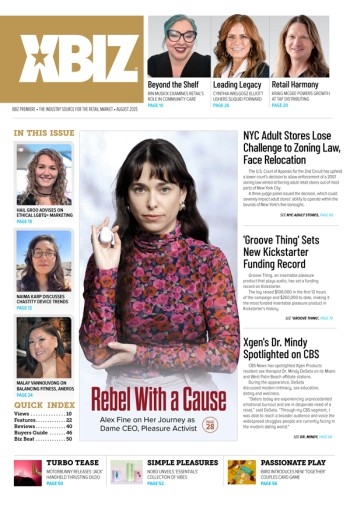You've seen some shitty sites convert like mad. Understandable. What makes a good site? What makes a shitty site? Zayne E. has been participating in a thread on another webmaster forum, and he wanted to share his VERY pertinent comments and information regarding site design, and the psychology of the web surfer, with his fellow XBiz’ readers. Enjoy!
We, as designers, are so focused on *pop* *pop* *flash* *dazzle* *bullsh!t* that we completely leave out psychology. LESS IS MORE! I have said it on other boards and I will say it again here. Are you "talking" your way out of the sale by confusing the surfer with too much? This might accurately explain why more "open designs" are converting like mad. They’re laid out so that they’re easy on the eyes, and easy to follow. A CONFUSED MIND ALWAYS SAYS NO! Hit someone with too much, too fast and they're gonna bail, plain and simple. And after they regain their wits, they won't return to that site, period!
And, remember (or LEARN) the "rule of thirds!" If you don't know what it is then it's likely the sites you've done that convert well were a shot in the dark that happened to hit their mark (and designs you think ROCK convert "like shit"). Psychologically speaking, a person's eyes move in a certain pattern when they first hit any type of document, including a web page. Violate the rule of thirds and you have confused the surfer; *BOOM!* They've bailed. Go bust your ass and find another one to replace him. Good luck. And believe it or not, the MAJORITY of every page you have ever designed has a MAJOR portion that is never looked at by your surfer! Follow the rule of thirds and your conversions WILL go up dramatically.
The Rule of Thirds
The way the mind works is it scans information FIRST to see if it's relevant. If it finds something of interest, deeper attention to detail will ensue. The way in which the mind scans is the same for everyone but 'right brainers' scan in the opposite direction of 'left brainers.' The two possibilities:


You want your main points to be centered on, or very near, the circles.
Some designers concentrate on an incredible logo or catchy domain...back in the day when everyone was on dial up, this was great. The surfer needed something "catchy" to look at while the rest of the page loaded. Now, with hardcore surfers turning to DSL/cable, even a 140k page loads very rapidly allowing for "natural" scanning of the document...
Many designers create great navigation buttons that they want to be a focus of attention. Cool. But never even noticed unless you got their attention already and they plan to peruse the site deeper (stay)... Still others are great at writing catchy phrases and presenting them with the latest, easy to read, bold-ass font. Well, if they're not "on the mark," they too will not get read unless the surfer's attention has already been caught and he plans to stay. I scroll down and repeated until I got to the bottom of the page. This wasn't planned, it's the way PEOPLE are programmed!
You want your best images and your main points to be on the marks. All marks can be images, or one big image. As an example, I remember the first time I went to SeeSea's pay site: She has some text of the selling points of the site and a nice, large image to the right. When the page first loaded, I recall looking at the first item on the list of selling points to the site... then my eyes immediately went to the image and scanned it top-to-bottom. There's your three target points: top left, top-right, bottom-right. I never even glanced at the rest of her bulleted list of site features! Now, as I scrolled down the page, the next thing to be a full screen shot was a whole series of crisp, clear, large thumbnails. Again, my eyes followed the same pattern... I didn't look at every image, just the ones "on target" – then moved on, my attention kept. I scroll down and repeated until I got to the bottom of the page. This wasn't planned, it's the way PEOPLE are programmed!
If you honestly don't think this is real, go to that site (or ANY site, for that matter) and pay attention to your behavior as you scan the page. You might be surprised in what you notice. (Note: we have all had the experience of going to a site and "just liking it" "for some unknown reason" even if it wasn't particularly well designed from the standpoint of great graphics work)
When considering those shitty sites that convert like mad, one naturally asks if it might have been because the surfer was treated well from a psychological standpoint, and did it maybe follow the rule-of-thirds to the letter (intentionally or not)?
No, design is not everything; it's a lot, but not everything. Treating the surfer's psyche well is what might very well be the incredible, elusive factor that all webmasters have been scratching their heads about for so long. I can hear it now..."that simple site looks like shit and converts way better than my glamorous, glitzy site with 50 crisp images on the index page and over 40 witty, little catch phrases – and it gets the same amount of traffic. I just don't get it!"
The Zayne E. One has spoken






